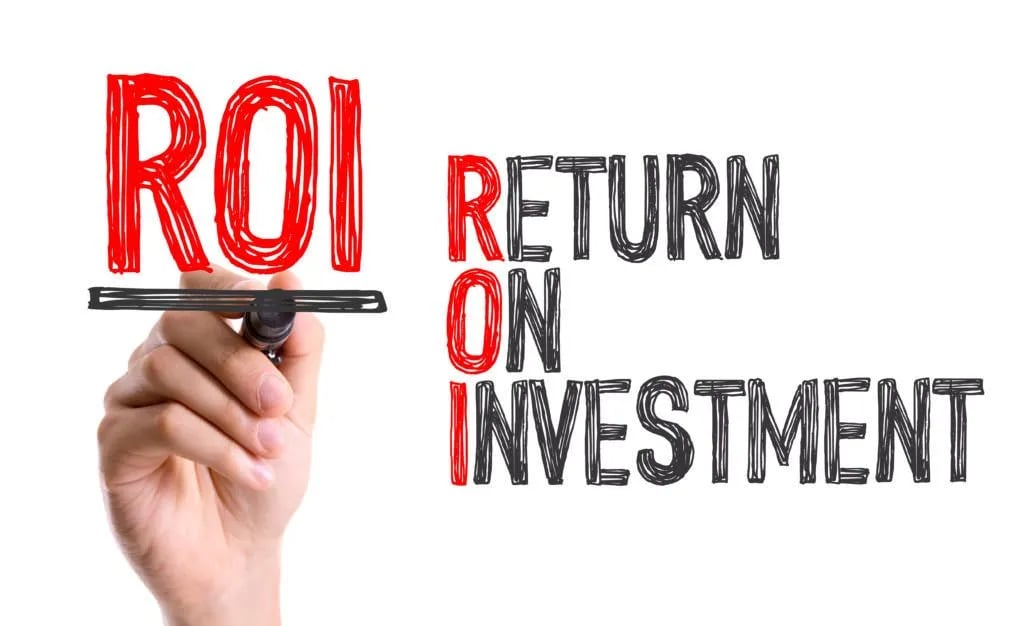
As a business owner, you’ve invested time and effort into creating a website that showcases your brand and attracts customers. However, if your website is not performing as expected, it can be frustrating and affect your bottom line. You’ve got a great business, but somehow, your website isn’t converting leads into sales. It’s time to identify the bottlenecks and make necessary improvements to unlock your sales potential. In this article, we’ll guide you through a step-by-step process to boost your website’s performance, increase traffic and conversion rates, and ultimately drive more sales for your business. With Mister Nguyen Agency, we’ll help you create a seamless digital experience that resonates with your customers and sets your brand apart on social media and beyond.
Understanding the Importance of Conversion Rate Optimization (CRO)
A well-performing website is crucial for any business, as it directly impacts the bottom line. According to The Ultimate Guide to Website Performance, a slow website can lead to a significant loss in conversions and revenue. However, having a fast website is just the beginning. To truly maximize your online presence, you need to focus on Conversion Rate Optimization (CRO).
What is CRO?
One of the most critical aspects of website performance is conversion rate optimization. CRO is the process of identifying and fixing issues that prevent visitors from converting into customers. It’s about understanding why your website visitors aren’t taking the desired actions, whether it’s filling out a form, making a purchase, or subscribing to a newsletter. By optimizing your website for conversions, you can increase leads, sales, and ultimately, revenue.
CRO is often viewed as a subset of a UX Audit, which focuses on all aspects of the product experience. While a UX Audit is important for understanding the overall user experience, CRO prioritizes conversions. If you’re dealing with clear bottlenecks in your funnel, then CRO is the way to go.
Why is CRO important?
Important as it may seem, many businesses overlook the significance of CRO. They focus on driving traffic to their website without considering the user experience and conversion rates. However, without a well-optimized website, all that traffic is wasted.
Optimization is key to unlocking your website’s full potential. By identifying and fixing conversion-killing issues, you can increase your website’s conversion rate, leading to more leads, sales, and revenue. A well-executed CRO audit can highlight ways to improve traffic and conversion rates, allowing you to make smarter marketing moves.
In today’s digital landscape, having a website that converts is crucial for any business. At Mister Nguyen Agency, we understand the importance of CRO and can help you optimize your website for maximum conversions. Whether you’re looking to increase leads, sales, or revenue, our expert team can guide you through the process of conversion rate optimization. By focusing on CRO, you can take your business to the next level and stay ahead of the competition.
Preparing for a CRO Audit
Any website owner or business person knows that a conversion rate optimization (CRO) audit is a crucial step in identifying areas for improvement on their website. But before entering into the audit process, it’s important to prepare and set yourself up for success.
Preparing for a CRO audit involves identifying critical pages to evaluate, defining measurable user actions, and understanding what you want to achieve from the audit. By doing so, you’ll be able to focus your efforts on the most critical areas of your website and make data-driven decisions to improve your conversion rates.
Identifying Critical Pages to Evaluate
Preparing for a CRO audit starts with identifying the critical pages on your website that have the greatest impact on your conversions. These pages may include:
Heaviest traffic pages, top-converting pages, pages with the highest bounce rate, or pages with the lowest conversion rate. Take a hard look at your business operations and pinpoint pages that seem to be the most critical in your customer journey: homepage, category pages, product pages, or your cart page?
By identifying these critical pages, you’ll make your efforts more targeted – and much more likely to yield the desired results. For instance, if you’re an e-commerce business, your product pages may be a critical area to focus on, as they directly impact your sales.
Defining Measurable User Actions
An important step in preparing for a CRO audit is defining measurable user actions. When we talk about business goals, it’s common to have macro conversions in mind – such as completing a sale. However, based on your business type and setup, your measurable objectives could also be smaller actions that guide clients closer to the final sale.
These micro actions may include adding a product to the cart, subscribing to a newsletter, downloading a PDF guide, viewing a video, registering for a webinar, or installing an app. To knock off this item in your CRO audit checklist, decide which user actions seem the most crucial to track.
Measurable user actions help you understand what actions you want your customers to take on your website. By defining these actions, you’ll be able to set clear conversion objectives and make data-driven decisions to improve your conversion rates.
By following these steps, you’ll be well-prepared to conduct a successful CRO audit and identify areas for improvement on your website. Keep in mind, the goal of a CRO audit is to discover why client visits do not turn into sales and make necessary improvements that align with the collected information. With a well-prepared CRO audit checklist, you’ll be able to zoom in on the problem: “Why aren’t my visitors converting?” and work on a granular instead of a generic level.
Selecting the Right Tools for a CRO Audit

All successful CRO audits rely on the right tools to provide valuable insights into your website’s performance. In this chapter, we’ll explore the imperative tools you need to get the most out of your CRO audit.
Squeezing the Most out of Google Analytics
Right from the start, it’s crucial to leverage Google Analytics to its full potential. This powerful tool offers a wealth of data that can help you understand your website’s performance and identify areas for improvement. By setting up your Goals in Google Analytics, you can track conversions, monitor marketing campaigns, and pinpoint critical funnel points where visitors tend to drop off.
For instance, you can set up Goals to track your website’s conversion rate, total number of conversions, or marketing campaigns that drive the largest number of conversions. By doing so, you’ll gain a deeper understanding of your website’s performance and be able to make data-driven decisions to optimize your conversion funnel.
Another imperative feature in Google Analytics is Events. An Event is a user’s interaction with a web page element, such as a video, podcast, image, button, scroll bar, or link. By tracking Events, you can gain valuable insights into how users interact with your website and identify areas where you can improve the user experience.
Using Heatmaps to Your Advantage
Squeezing the most out of heatmaps is another crucial step in your CRO audit. Heatmaps provide a visual representation of where users click, move, and scroll on your website, giving you valuable information on which elements are getting attention and which ones stay ignored.
There are various forms of heatmaps, including click maps, mouse movement maps, and scroll maps. By analyzing these heatmaps, you can identify patterns in user behavior, pinpoint areas of friction, and optimize your website’s design to improve the user experience.
Your heatmap analysis can also help you validate your design concepts during the design stage with AI-generated attention analytics. This can help you create a more user-friendly and conversion-oriented design from the outset.
Trying Surveys for Deeper Insights
One of the most effective ways to gain deeper insights into your customers’ needs and preferences is by conducting surveys. Surveys can help you understand why users behave in certain ways, what motivates them to convert, and what obstacles prevent them from completing a purchase.
By asking the right questions, you can gather valuable feedback that can inform your optimization strategy and help you create a more customer-centric website. For instance, you can ask users about their pain points, what they like or dislike about your website, or what features they’d like to see in the future.
A well-designed survey can provide you with a wealth of qualitative data that can help you optimize your website’s user experience, improve conversion rates, and ultimately drive more sales and revenue for your business.
Formulating a Game Plan for CRO
Now that you’ve decided to take the first step towards optimizing your website’s performance, it’s time to formulate a game plan for Conversion Rate Optimization (CRO). This plan will serve as a roadmap to help you identify areas of improvement, prioritize changes, and measure their impact on your website’s performance.
Finding Bottlenecks to Target
Bottlenecks in your conversion funnel can be major obstacles to achieving your business goals. To find these bottlenecks, you need to analyze your website’s user journey and identify areas where visitors are dropping off or experiencing friction. Start by examining your website’s analytics data to identify pages with high bounce rates, low conversion rates, or slow loading times. These could be indicative of underlying issues that need to be addressed.
Look for patterns in user behavior, such as which pages are most commonly exited from or where users are getting stuck in the conversion process. By pinpointing these bottlenecks, you can focus your optimization efforts on the areas that will have the greatest impact on your website’s performance.
Formulating Hypotheses
On the basis of your analysis, formulate hypotheses about what changes could improve your website’s performance. These hypotheses should be specific, measurable, and actionable. For example, “If we simplify the checkout process, we can increase conversions by 10%.” or “If we improve the loading time of our product pages, we can reduce bounce rates by 20%.”
Hypotheses should be based on data and user feedback, rather than assumptions or personal opinions. By formulating hypotheses, you can create a clear direction for your optimization efforts and prioritize changes that are likely to have the greatest impact.
Hypotheses are not set in stone, and they may evolve as you gather more data and feedback from users. The key is to approach optimization with a mindset of continuous testing and iteration, rather than making assumptions about what will work best.
By following these steps, you can create a solid game plan for CRO that will help you identify areas of improvement, prioritize changes, and measure their impact on your website’s performance. Keep in mind, the goal of CRO is to create a seamless user experience that drives conversions and ultimately, grows your business. At Mister Nguyen Agency, we specialize in helping businesses like yours optimize their websites for maximum performance. Contact us today to learn more about our CRO services and how we can help you achieve your business goals.
Putting it All into Effect: A/B Testing and Evaluation
For your website to truly thrive, you need to put your optimization strategies into action and measure their effectiveness. This is where A/B testing and evaluation come in – crucial steps in the conversion rate optimization (CRO) audit process.
Performing A/B Testing
With your hypotheses in place, it’s time to test them using A/B testing. This involves creating two versions of a webpage or element – a control version (A) and a variant version (B) – and measuring which one performs better in terms of conversions. By doing so, you’ll be able to determine whether your optimization efforts are paying off and make data-driven decisions for future improvements.
When performing A/B testing, it’s necessary to ensure that you’re testing only one variable at a time. This will help you pinpoint exactly what’s causing the change in conversion rates. Additionally, make sure to test for a statistically significant period to get reliable results.
Evaluating Your Results
Effectively evaluating your A/B testing results is crucial to understanding what’s working and what’s not. This involves analyzing the data collected during the testing period and determining whether the changes you made had a significant impact on conversion rates.
Performing a thorough evaluation of your results will help you identify areas that need further improvement and optimize your website for better performance. Be sure to consider factors such as the number of conversions, conversion rate, and revenue generated when evaluating your results.
By taking the time to evaluate your results carefully, you’ll be able to refine your optimization strategy and make targeted improvements to your website. This will ultimately lead to a better user experience, increased conversions, and a boost to your business’s bottom line. As a business owner, your goal is to turn prospects into paying customers, and evaluating your results is a critical step in achieving that goal.
Common Mistakes to Avoid in CRO
To ensure a successful conversion rate optimization (CRO) audit, it’s crucial to steer clear of common mistakes that can hinder your progress. Here are some pitfalls to watch out for:
Blindly Applying Tried-and-True Practices
With the abundance of CRO resources available online, it’s tempting to adopt tried-and-true practices without considering your website’s unique needs. However, this approach can lead to mediocre results or even harm your conversion rates. Every business is distinct, and what works for others might not work for you. It’s crucial to understand your audience, identify specific pain points, and tailor your optimization strategies accordingly.
When you apply generic solutions without analyzing your website’s specific challenges, you risk overlooking critical issues that need attention. By taking a cookie-cutter approach, you may end up wasting resources on ineffective optimizations that don’t address the root causes of your conversion rate problems.
Failing to Consider the Entire User Journey
On the surface, your website might seem to be functioning smoothly, but there could be underlying issues that prevent visitors from converting. To uncover these bottlenecks, you need to examine the entire user journey, from the moment they land on your website to the final conversion step. This involves analyzing every touchpoint, interaction, and decision-making process that influences their behavior.
Entire user journey analysis helps you identify friction points, areas of confusion, and opportunities to improve the overall experience. By doing so, you can create a more seamless and persuasive journey that guides visitors toward conversion. Bear in mind, conversion rate optimization is not just about tweaking individual elements; it’s about crafting a cohesive experience that resonates with your target audience.
By avoiding these common mistakes, you’ll be able to conduct a more effective CRO audit that yields meaningful insights and actionable recommendations for improvement. This will help you unlock your website’s full potential, drive more conversions, and ultimately grow your business. At Mister Nguyen Agency, we specialize in helping businesses like yours optimize their websites for maximum performance. Contact us today to learn more about our CRO services and how we can help you succeed in the competitive digital landscape.
Conclusion
To wrap up, optimizing your website’s performance is crucial for the success of your business. By following the 9-step CRO audit checklist, you’ll be able to identify areas of improvement, fix bottlenecks, and ultimately increase conversions. Recall, your website is not just a digital presence; it’s a tool designed to turn prospects into paying customers. By putting yourself in your customers’ shoes and evaluating their digital experience, you’ll be able to make data-driven decisions that drive real results.
At Mister Nguyen Agency, we understand the importance of a well-performing website. That’s why we’re committed to helping businesses like yours thrive online. Whether you need help with conversion rate optimization, social media management, or design and branding, our team of experts is here to support you every step of the way. By working together, we can unlock your website’s full potential and drive more leads, sales, and growth for your business.











